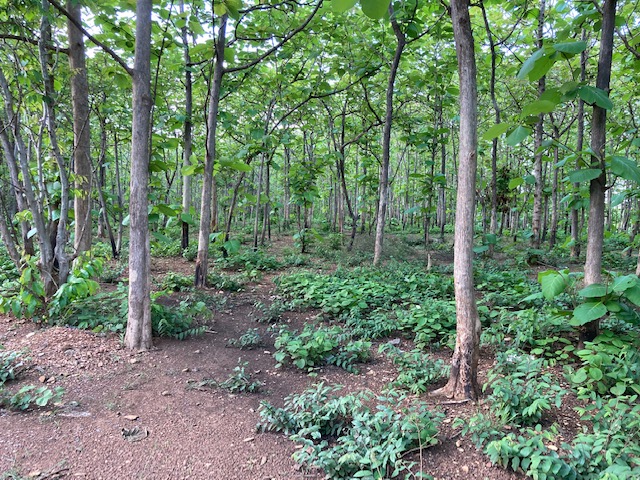Home > International Partnerships > Collaborative Research > Does an increase in atmospheric CO2 concentration increase or decrease transpiration from forests?
Update:June 2, 2025
Main content starts here.
Does an increase in atmospheric CO2 concentration increase or decrease transpiration from forests?
1. Partners
Forestry Administration, Cambodia
2. Research
FY 2023–2027 Grant-in-Aid for Scientific Research (KAKENHI)
3. Lead Researcher
Tayoko Kubota (Department of Disaster Prevention, Meteorology and Hydrology)
4. Background
Plant water use efficiency is expressed as the amount of plant growth due to photosynthesis expressed as dry weight (= photosynthetic production) divided by the amount of water used for the growth (= transpiration). Plants are known to close their stomata when the concentration of CO2 in the atmosphere increases. Closing the stomata reduces the amount of water vapor (= transpiration) that is lost when CO2 is taken in through the stomata. However, it is not understood how reduced transpiration per leaf changes transpiration in forest ecosystems due to increased leaf amount, prolonged transpiration periods, or lack of soil moisture and nutrients caused by increased CO2 concentrations and warming.
5. Research Goal
Since water use efficiency per a leaf can be calculated based on the carbon stable isotope ratios of tree rings, we aim to reconstruct past transpiration rates in forest ecosystems over a long period of time on a yearly basis using tree-ring width and carbon stable isotope ratios. This will reveal how forest ecosystems have adapted to rising atmospheric CO2 concentrations and global warming. The same analysis will also be conducted in the Tohoku to Kyushu regions of Japan and in the Kingdom of Cambodia to determine regional characteristics.
6. Research Strategy
At the hydrological and meteorological observation sites owned by the Forestry and Forest Products Research Institute in Japan and the Kingdom of Cambodia, tree-ring cores of mainly cedar and beech in Japan and teak in the Kingdom of Cambodia are collected using a increment borer. In addition to measuring tree- ring width, cellulose is extracted and analyzed for carbon sable isotope ratios. The annual amount of photosynthetic product is estimated using the tree-ring width, and the water use efficiency is calculated from the carbon stable isotope ratio of tree ring. Transpiration is then estimated using the equation water use efficiency = the annual amount of photosynthetic product / the annual amount of transpiration. The estimated transpiration is then compared to the evapotranspiration estimated from hydrological observations and meteorological tower flux observations to verify that the estimates are valid.
7. Publications
(Related research)
Tayoko Kubota, Akira Kagawa, Toshio Abe, Ikuhiro Hosoda (2021) Effects of clear-cutting, meteorological, and physiological factors on evapotranspiration in the Kamabuchi experimental watershed in northern Japan. Hydrological Processes 35:e14111.
Tayoko Kubota, Akira Kagawa, Koji Shich, Kenji Ono (2022) The promotional effect of increased growth on transpiration exceeds the inhibitory effect of increased water use efficiency over the life history of Fagus crenata trees. Journal of Forest Research 27(5):352-362.

Figure 1: Teak Forest in Kratie Province, Kingdom of Cambodia
Copyright © Forest Research and Management Organization. All rights reserved.
